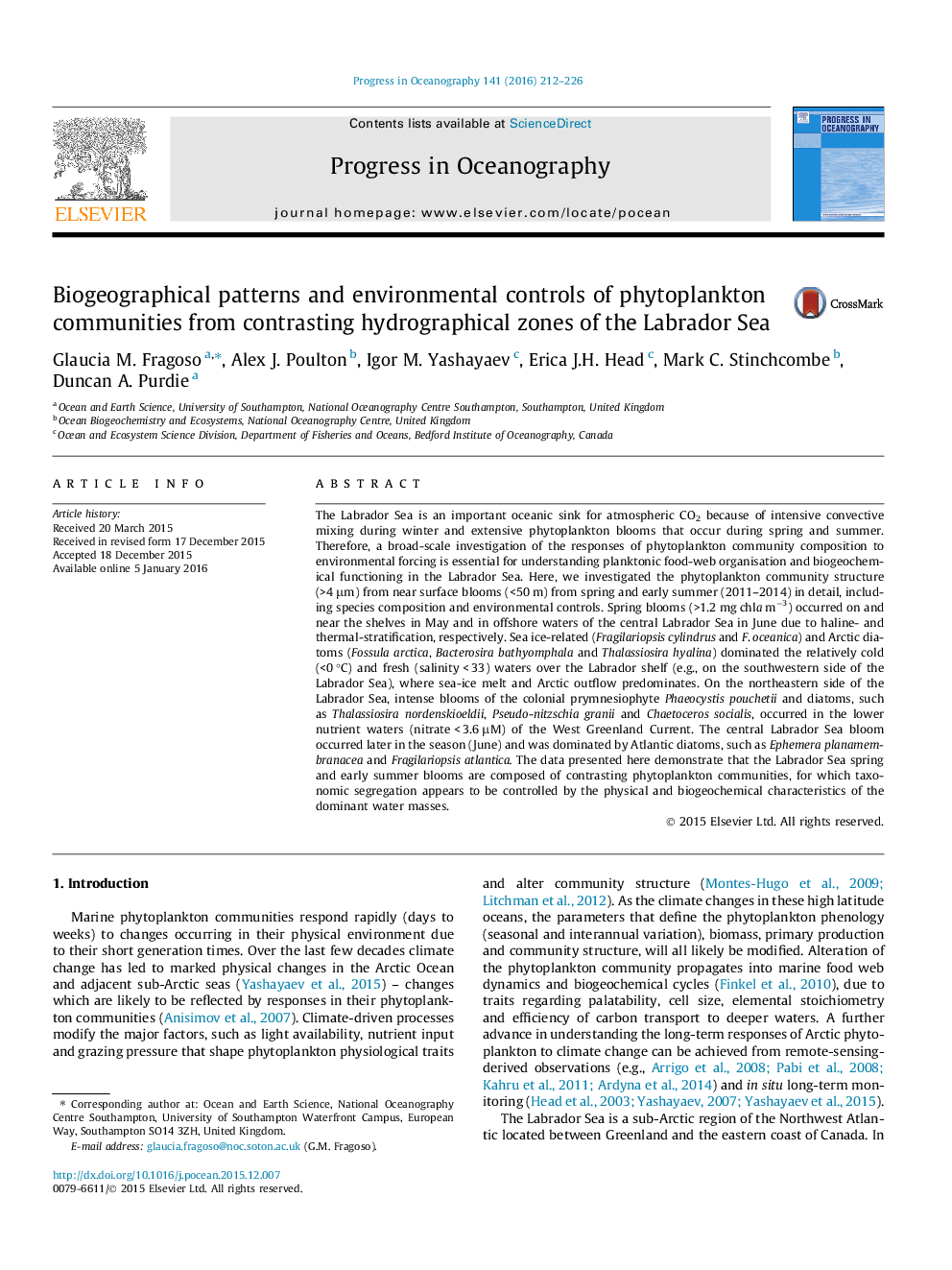| Article ID | Journal | Published Year | Pages | File Type |
|---|---|---|---|---|
| 4552968 | Progress in Oceanography | 2016 | 15 Pages |
•Phytoplankton communities from the Labrador Sea (spring 2011–2014) were analysed.•Analysis revealed biogeography of phytoplankton communities in the Labrador Sea.•Haline-driven stratification supported blooms on the shelves.•Thermal-driven stratification sustained blooms in the deep basin.•Silica concentrations potentially influenced segregation of diatoms and Phaeocystis.
The Labrador Sea is an important oceanic sink for atmospheric CO2 because of intensive convective mixing during winter and extensive phytoplankton blooms that occur during spring and summer. Therefore, a broad-scale investigation of the responses of phytoplankton community composition to environmental forcing is essential for understanding planktonic food-web organisation and biogeochemical functioning in the Labrador Sea. Here, we investigated the phytoplankton community structure (>4 μm) from near surface blooms (<50 m) from spring and early summer (2011–2014) in detail, including species composition and environmental controls. Spring blooms (>1.2 mg chla m−3) occurred on and near the shelves in May and in offshore waters of the central Labrador Sea in June due to haline- and thermal-stratification, respectively. Sea ice-related (Fragilariopsis cylindrus and F. oceanica) and Arctic diatoms (Fossula arctica, Bacterosira bathyomphala and Thalassiosira hyalina) dominated the relatively cold (<0 °C) and fresh (salinity < 33) waters over the Labrador shelf (e.g., on the southwestern side of the Labrador Sea), where sea-ice melt and Arctic outflow predominates. On the northeastern side of the Labrador Sea, intense blooms of the colonial prymnesiophyte Phaeocystis pouchetii and diatoms, such as Thalassiosira nordenskioeldii, Pseudo-nitzschia granii and Chaetoceros socialis, occurred in the lower nutrient waters (nitrate < 3.6 μM) of the West Greenland Current. The central Labrador Sea bloom occurred later in the season (June) and was dominated by Atlantic diatoms, such as Ephemera planamembranacea and Fragilariopsis atlantica. The data presented here demonstrate that the Labrador Sea spring and early summer blooms are composed of contrasting phytoplankton communities, for which taxonomic segregation appears to be controlled by the physical and biogeochemical characteristics of the dominant water masses.
